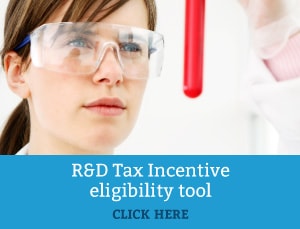Swanson Reed observations on media and industry reaction to ATO’s required publishing of R&D data under transparency laws
October 21st, 2024
Following the support of both major political parties, the legislation to enact the publication of Research and Development (R&D) expenditure claimant information was passed in 2021.
Reforms to the policy and administration of the R&D Tax Incentive (R&DTI) program were within Treasury Laws Amendment (A Tax Plan for the COVID-19 Economic Recovery) Act 2020.
The first year of claim data to be released under the new transparency measure was FY22 (income years commenced on or after 1 July 2021) and this information was published in recent weeks, which reported:
- The name of the R&D entity claiming the R&D Tax Incentive;
- Their ABN/ACN;
- The entity’s total expenditure on R&D (known as total notional deductions claimed – label Z in Part A of the R&D tax incentive schedule) less any feedstock adjustments (label B in Part B of the R&D tax incentive schedule).
Following the original announcement of the transparency measures in 2021, Swanson Reed updates noted potential benefits (including transparency, benchmarking and accountability) and concerns (including potential uninformed scrutiny, distorted statistics and privacy) around the publication.
The media and industry reaction since the report’s release in recent weeks has been interesting and varied:
- The AFR has posted an article titled ‘Unlikely winners of ATO’s R&D tax rules’ including highlights of claims made by certain large companies and large claims by Gambling Technology companies.
- The Accounting Times published comments by Australian Industry Group that were critical of new reporting requirements for the R&D tax incentive, warning the ATO’s transparency push could worsen falling investment levels and even “inadvertently benefit” non-compliant businesses. Australian Industry Group said it had “significant concerns” that the reporting requirements were exacerbating falling R&D investment levels rather than encouraging compliance.
- Other media outlets have singled out the figures reported by very large companies (including Atlassian and others) and the likely impact of the company tax position.
- Other R&D Advisors whom we respect have noted how the release of data provides a target list for aggressive R&D Advisors or Consultants to approach companies with a platform seeking to increase their published claims.
It is certainly the media’s right (and job) to comment on the release of now public information; however, given the complexity of the R&D Tax Incentive, it must be emphasised that it can be very misleading to form a view about a company’s investment in R&D or behaviour as a taxpayer on the basis of a single R&D Expenditure figure, which may or may not appear in the transparency reports.
For example:
- We are aware of many companies investing significant amounts in R&D Expenditure that is not claimed under the R&D Tax Incentive (or not claimed to the extent of their full legal entitlement). These companies’ absence from the transparency list may lead one to conclude that they are not an innovative company; however, their omission may be for valid commercial reasons including:
- They may have group turnover greater than $20M, yet have significant accumulated tax losses, meaning they cannot commercially benefit from the R&D Tax Incentive in the near term; or
- Their technical staff may not have the bandwidth to complete the R&D Application or maintain the requisite supporting information.
- The figures published in the transparency report alone do not allow meaningful analysis of what the reported entities’ R&D Claims may be actually costing taxpayers. For example:
- The report does not disclose group turnover and whether the company may claim under the refundable or non-refundable R&D Tax Offset.
- For companies claiming the Refundable R&D Tax Offset (43.5% for most companies), it is not widely reported or understood that when companies claim their 43.5% R&D Offset, they forfeit their general tax deduction for R&D Expenditure (25% for most companies), meaning the net cost to the taxpayer is around $0.185 of R&D Expenditure, assuming the companies may have made use of the foregone tax losses when profitable (and many never will be profitable). The situation gets even more complex when considering the impact of R&D Claims on franking account balances and future profit distributions.
It is also important to consider that an effective R&D Tax Incentive must be stable, known, broad based (i.e. accessible by all industries) and market driven (i.e. the market decides where the best use of scarce R&D Capital should be deployed). Having media comment on how one particular industry segment may be less suitable to benefit from R&D Tax Incentives when compared with others may detract from a key feature of the programme, which is to let the market decide where to make R&D Investments.
Having public pressure on R&D Tax Incentive utilisation by certain companies and industries detracts from the broad based element of the programme, and may support calls by some to divert funding from a broad, market based, self assessment programme to a grant based system that is assessed based on government identified areas of strategic priority. A move towards a grant based system at the expense of the R&D Tax Incentive would, in our view, be a mistake for various reasons, which we have outlined in our previous updates.
The release of the transparency reports and subsequent debates also come at a time when the Government will undertake a strategic examination of Australia’s R&D system, as announced in the May 2024 Federal Budget.
Swanson Reed notes that the issues are complex, but on the whole the change to publish R&D claimant data probably does more harm than good.
Regardless of anyone’s thoughts on the disclosure changes, they are now the law, and stakeholders should be aware of the requirements.
Please get in touch with our office if you require assistance, would like to speak to someone about a potential claim, or check out our website for more information.
Categories
- ATO Guidance and Materials
- AusIndustry Guidance and Materials
- Case Law
- Federal Budget 2021
- Federal Budget 2022
- Federal Budget 2024
- For Accountants
- General Information
- Government Policy and Treasury
- Industry Specific Issues
- Interpretative Decisions
- Legislation and Parliamentary Matters
- R&D Tax Credit
- R&D Tax Funding Strategies
- R&D Tax Loans
- Recent News
- Tax Determinations
Archives
- October 2024
- September 2024
- August 2024
- July 2024
- June 2024
- May 2024
- April 2024
- March 2024
- February 2024
- January 2024
- December 2023
- November 2023
- October 2023
- September 2023
- August 2023
- July 2023
- June 2023
- May 2023
- April 2023
- March 2023
- February 2023
- January 2023
- December 2022
- November 2022
- October 2022
- September 2022
- August 2022
- July 2022
- June 2022
- May 2022
- April 2022
- March 2022
- February 2022
- January 2022
- December 2021
- November 2021
- October 2021
- September 2021
- August 2021
- July 2021
- June 2021
- May 2021
- April 2021
- March 2021
- February 2021
- January 2021
- December 2020
- November 2020
- October 2020
- September 2020
- August 2020
- July 2020
- June 2020
- May 2020
- April 2020
- March 2020
- February 2020
- January 2020
- December 2019
- November 2019
- October 2019
- September 2019
- August 2019
- July 2019
- June 2019
- May 2019
- April 2019
- March 2019
- February 2019
- January 2019
- December 2018
- November 2018
- September 2018
- July 2018
- June 2018
- May 2018
- April 2018
- March 2018
- February 2018
- January 2018
- December 2017
- November 2017
- September 2017
- August 2017
- July 2017
- June 2017
- May 2017
- April 2017
- March 2017
- February 2017
- January 2017
- December 2016
- November 2016
- October 2016
- September 2016
- August 2016
- July 2016
- June 2016
- May 2016
- April 2016
- March 2016
- February 2016
- January 2016
- December 2015
- November 2015
- October 2015
- September 2015
- August 2015
- July 2015
- June 2015
- May 2015
- April 2015
- March 2015
- February 2015
- January 2015
- November 2014
- October 2014
- September 2014
- August 2014
- July 2014
- June 2014
- May 2014
- April 2014
- March 2014
- February 2014
- January 2014
- December 2013
- November 2013
- October 2013
- September 2013
- May 2013
- April 2013
- March 2013
- September 2012
- August 2012
- June 2012


 Free Call: 1800 792 676
Free Call: 1800 792 676





 News & Research
News & Research



